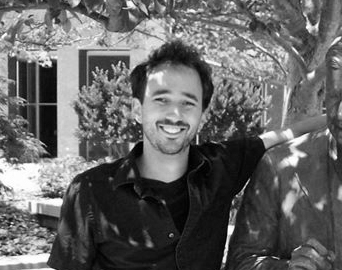
In my previous article, Twitter Terrorism: A Sophisticated Weapon in the War on Terror, I examined how social media has been exploited by extremist groups since the late 1990’s as a tool to recruit and radicalize seemingly unassociated youth. Yet, the governmental response in both the U.K. and the U.S. has failed to effectively counter this radicalization process. The most direct way to combat the propaganda of terrorist groups is to exploit the same tools that they use to counter-radicalize the targeted disenfranchised youth. The ultimate goal is not to dispute the zealous ideology, but to derail potentially violent behavior. Many lives depend on whether governments employ these strategies effectively.
Counter-radicalization, as defined by the United Nations Working Group on Radicalization and Extremism that Lead to Terrorism, is “a package of social, political, legal, educational and economic programmes specifically designed to deter disaffected (and possibly already radicalised) individuals from crossing the line and becoming terrorists” (Comparative Evaluation Framework for Counter Radicalisation). It is a preemptive response to the extremist propaganda that terrorist groups like ISIS espouse on social media with the aim of reducing the vulnerability and polarization of target populations. Radicalization is the result of many contributing factors such as divisions, grievances, ideological narratives, and socio-political justifications. As the European Commission’s expert group on violent radicalization noted, “The convergence of several possible contributing variables can usually be found at the origin of the radicalization process” (The Role of Civil Society in Counter-Radicalisation and De-Radicalisation: A Working Paper of the European Policy Planners’ Network on Countering Radicalisation and Polarisation (PPN)). These many factors mean no single pathway exists to counter-radicalize susceptible populations. Therefore, government agencies must focus on minimizing a variety of facets of vulnerability that may lead to domestic recruitment and radicalization.
Prevent, an element of the United Kingdom’s counter-terrorism strategy known as CONTEST, is the product of more than a decade of anti-terrorism efforts, primarily in response to the British Jihadi Network. The objectives of the Prevent program are similar to counter-radicalization programs in the United States: to respond to ideological challenges that result from extremism, to support vulnerable populations, and to collaborate with appropriate organizations for maximum efficiency. However, in 2010 British government officials declared Prevent a failure primarily because it was unsuccessful at attacking the root of terrorism: communication. Effective counter-radicalization efforts must address the medium of interaction, not just the message.
Serious governmental blunders associated with Prevent demonstrate the unfocused nature and perhaps lack of on-the-ground knowledge that caused its failure. In one case, the government allotted funds to a Girl Scout Troop for supplies and karate classes, suggesting a naive mismanagement of £140 million in 2008-2009 alone (Brandon 2014). These actions ultimately led to Prevent being completely discredited and described as a counterproductive — not counter-terrorism — program. In fact, Theresa May, the U.K. Home Secretary, stated in a seemingly desperate attempt to reform Prevent that “funding sometimes even reached the very extremist organisations that Prevent should have been confronting” (Brandon 2014). The roots of Prevent’s true failure lie in its underestimation of the enemy’s adroit adaptation of strategies to augment their agendas. While democratic governments’ intentions move slowly, terrorist groups on the ground respond swiftly with unforeseen threats.
Prevent creates a dichotomy that feeds a dangerous element of Islamic ideology: ostracizing non-violent Muslims who feel the need to defend their culture from a patriarchal sense of “national security”. Part of what makes American and British Muslim youth so vulnerable to terrorist recruitment are the polarizing effects of an innate obligation to choose between a strict devotion to religion and a permissive surrounding culture. Yet, the alienating nature of Prevent’s Islamic-centric programs only illuminated a good vs. bad Muslim binary. Extremist Islamic groups originally saw Prevent as a legitimate threat to their expansion, thus, they executed what the U.S. and the U.K. should have been doing for the last decade: counter campaigns. Radical Islamists disseminated unified propaganda in order to demonize Prevent as a source of Islamophobia and anti-Western conspiracy theories. Ordinary Muslims, accosted with a barrage of allegations against Prevent, inherently approached the program with mistrust. While Prevent declared it is not a surveillance program and does not store any of the referral names, a former Prevent manager admitted this was untrue. During his tenure, he “confirmed that there is in fact a logging system of some kind which does store the names of all referrals”(Ahmed 2013). Prevent’s efforts at counter-radicalization therefore justified the anti-Western sentiments they aimed to undermine. Furthermore, Prevent characterized Muslim ideology as radical and threatening, establishing a dangerous strategy of altering ideologies instead of averting potentially violent behavior. Particularly in secular countries run by non-Muslims, it is imperative to acknowledge that even the most forthright ideologues do not have to sacrifice their beliefs for behavior reform. In fact, accepting extreme ideologies may be the best way to de-romanticize them, thus eliminate the primary recruitment tactic of ISIS. However, creating a dialogue conducive to counter-radicalization needs to not only be credible, but accessible: two elements void in Prevents far too bureaucratic structure.
On February 18 the White House hosted a Summit on Countering Violent Extremism, with representatives from 60 countries and every continent, to highlight international efforts to combat violent extremism. Barack Obama spoke of the dangers of deliberate propaganda sent out by groups like ISIS and Al Qaeda’s, noting that it exploits grievances such as poverty and a lack of educational opportunities. This propaganda feeds instability and terror globally. Obama also briefly mentioned in his introduction that the United States is joining with the United Arab Emirates “to create a new digital communications hub to work with religious and civil society and community leaders to counter terrorist propaganda” (Obama 2015). Though this description sounds vague, mentioning a digital presence is definitely a step in the right direction. Previous governmental attempts at a “digital presence” seemed similar to Prevent’s naiveté. Rita Katz, director of the SITE Intelligence Group, which monitors extremists’ online activities referred to the U.S. State Department’s Twitter and Facebook campaign Think Again Turn Away as a “gaffe machine” (Katz 2014). Think Again Turn Away regularly engages in “Twitter fights” with leaders of ISIS and Al Qaeda, including an Al Qaeda leader who is said to have been involved in the horrors of 9/11. This not only legitimizes the opposition’s accounts, but offers a platform for them to spew radical Islamic views with an attentive audience.
The U.S. would benefit by looking to Canada for guidance on digital culture. Specifically, Canada’s Extreme Dialogue initiative launched earlier this year is an online video series that offers a counter-narrative to youth who are vulnerable to terrorist recruitment propaganda. The campaign is funded by the Kanishka Project, a $10 million push by the Canadian Government to fund counter-terrorism research, and it came to fruition with the help of former white supremacist Daniel Gallant. People like Gallant, who was recruited with online resources such as “Radio Islam”, an extremist jihadist program, reveal that there is a common denominator of radicalization: alluring narratives. Extreme Dialogue aims to create an equally captivating counter-narrative and has been extremely successful so far; one video of a mother telling the heartbreaking story of her son’s radicalization and death had more than 15,000 views in its first day on YouTube (Gallant 2015). These real people telling their stories gain immediate credibility, unlike the illegitimacy of previous programs.
Earlier in his Presidency, Obama avoided directly referencing Islamic extremism in an attempt to avoid legitimization of radical zealots as religious leaders in the Middle East. In the February Summit on Countering Violent Extremism, he drastically changed his tune when he bluntly stated, “The older people here — as wise and respected as you may be, your stuff is often boring compared to what they’re doing. You’re not connected. And as a consequence, you are not connecting” (Panetta 2015). This fundamental issue of connection is the primary allure of terrorist groups — and the methods for combating it. Nations need to take advantage of social media, the most effective communication tool, to counter-radicalize the vulnerability of millennials that have been conditioned to look to the web for answers. As Humera Khan, executive director of anti-terrorism think tank Muflehun, affirms, the most effective way to provide a counter-narrative “is to actually use social media and to teach young people how to recognize octaves of speech that are used to incite violence so they can learn when they are being manipulated” (Khan 2014). Terrorism’s recruitment network is a grave and growing problem that will not be fixed by military action or poorly executed governmental initiatives. Very real and sophisticated social-media marketing efforts will target the grassroots of terrorism and its expansions in nations everywhere.
Bibliography
Ahmed, Nafeez. “UK’s Flawed Counter-Terrorism Strategy.” Le Monde Diplomatique. December, 13. Accessed April 16, 2015. http://mondediplo.com/blogs/uk-s-flawed-counter-terrorism-strategy.
Brandon, James. “The UK’s Counter-Radicalization Strategy Just Failed; What Now?.” War on the Rocks. September 18, 2014. Accessed April 14, 2015. http://warontherocks.com/2014/09/uk-attempts-to-create-moderate-islam-just-failed-what-now/.
Gallant, Daniel. “ “Extreme Dialogue” Aims to Deter ISIS Recruitment.” CBC News. February 27, 2015. Accessed April 15, 2015. http://www.cbc.ca/news/extreme-dialogue-aims-to-deter-isis-recruitment-1.2976266. (Link is no longer available)
Institute for Strategic Dialogue. Comparative Evaluation Framework for Counter Radicalisation. 2010. http://www.strategicdialogue.org/2010-06-21%20PPN%20Working%20Paper%20 %20Evaluation_FORWEBSITE.pdf.
Institute for Strategic Dialogue. The Role of Civil Society in Counter-Radicalisation and De-Radicalisation: A Working Paper of the European Policy Planners’ Network on Countering Radicalisation and Polarisation (PPN). http://www.strategicdialogue.org/PPN%20Paper%20-%20Community%20Engagement_FORWEBSITE.pdf.
Katz, Rita. “The State Department’s Twitter War with ISIS is Embarrassing.” Time. September 16, 2014. Accessed April 16, 2015. http://time.com/3387065/isis-twitter-war-state-department/.
Khan, Humera. “Using Social Media to Counter Violent Extremism.” Muflehun. November 14. Accessed March 30, 2015. http://muflehun.org/using-social-media-to-counter-violent-extremism/.
Obama, Barack. “Remarks by the President at the Summit on Countering Violent Extremism.” The State Department. February 19, 2015. Accessed April 20, 2015. https://www.whitehouse.gov/the-press-office/2015/02/19/remarks-president-summit-countering-violent-extremism-february-19-2015.
Panetta, Alexander. “White House Summit on ISIS Discusses Canadian Mom’s Project.” National Post. February 19, 2015. Accessed April 18, 2015. http://www.nationalpost.com/m/wp/blog.html?b=news.nationalpost.com/2015/02/19/white-house-summit-on-isil-discusses-canadian-moms-project.


